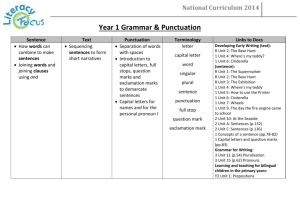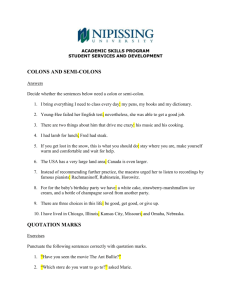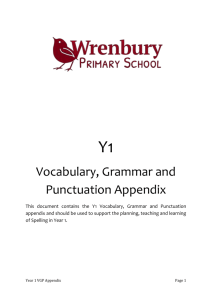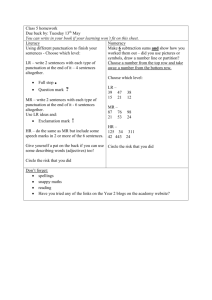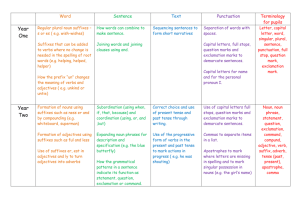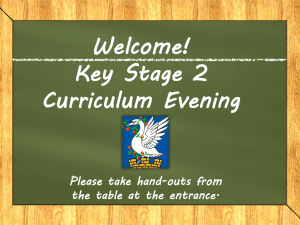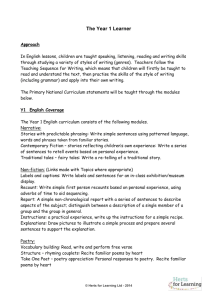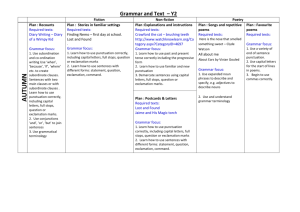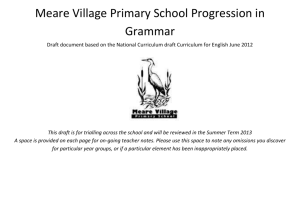The Year 1 Learner - Andrews Lane Primary School
advertisement
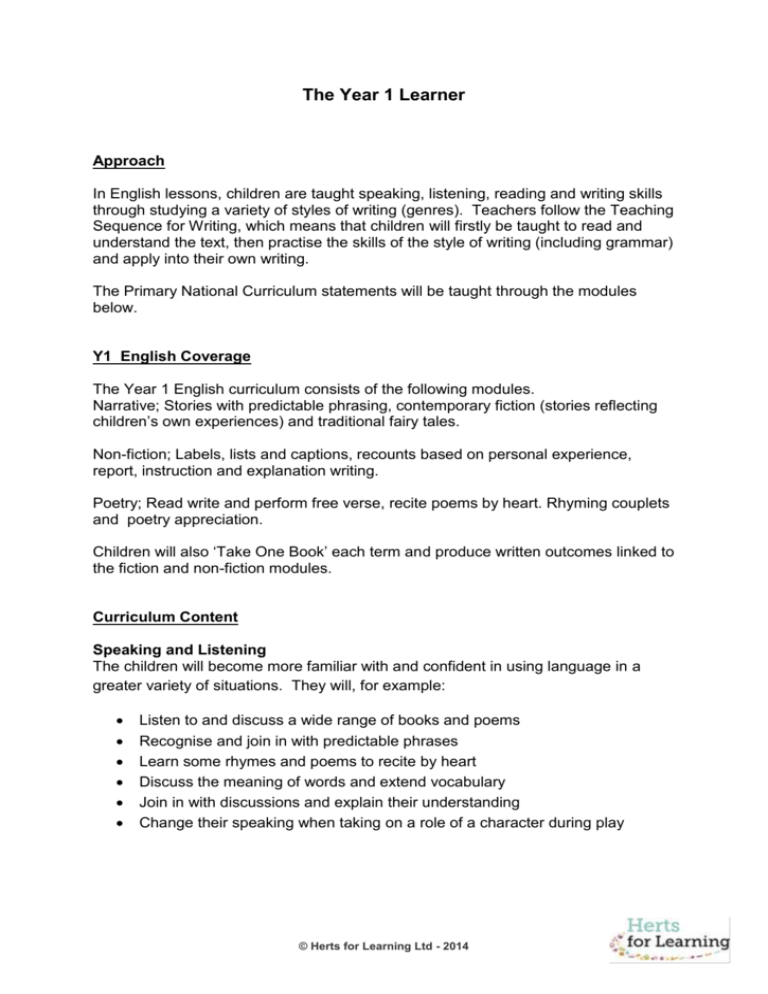
The Year 1 Learner Approach In English lessons, children are taught speaking, listening, reading and writing skills through studying a variety of styles of writing (genres). Teachers follow the Teaching Sequence for Writing, which means that children will firstly be taught to read and understand the text, then practise the skills of the style of writing (including grammar) and apply into their own writing. The Primary National Curriculum statements will be taught through the modules below. Y1 English Coverage The Year 1 English curriculum consists of the following modules. Narrative; Stories with predictable phrasing, contemporary fiction (stories reflecting children’s own experiences) and traditional fairy tales. Non-fiction; Labels, lists and captions, recounts based on personal experience, report, instruction and explanation writing. Poetry; Read write and perform free verse, recite poems by heart. Rhyming couplets and poetry appreciation. Children will also ‘Take One Book’ each term and produce written outcomes linked to the fiction and non-fiction modules. Curriculum Content Speaking and Listening The children will become more familiar with and confident in using language in a greater variety of situations. They will, for example: Listen to and discuss a wide range of books and poems Recognise and join in with predictable phrases Learn some rhymes and poems to recite by heart Discuss the meaning of words and extend vocabulary Join in with discussions and explain their understanding Change their speaking when taking on a role of a character during play © Herts for Learning Ltd - 2014 Reading This part of the curriculum is broken down into ‘word reading’ and ‘comprehension’. In Year 1, pupils continue to learn to read words using phonics as well as learning to recognise words that cannot easily be sounded out e.g. once. For further information regarding phonics and school reading scheme refer to Letters and Sounds. As well as being able to read words, children need to understand what they read and develop a life-long love of reading. They will learn to do this through carefully structured activities using a wide range of high-quality books. They are encouraged to: Make links between their own experiences and the story Check that they understand what they are reading Talk about the title and the main events Predict what might happen before they read it Join in with predictable phrases We are able to provide you with lists of age appropriate texts to support the learning Writing In Year 1 children develop their writing through the following areas: Spelling: Spell words using phonics Learn commonly used whole words that are difficult to sound out Spell the days of the week Begin to look at patterns and rules Handwriting: Hold a pencil correctly Form letters and digits correctly and confidently Leave spaces between words Composition: Speak in whole sentences Write sequences of sentences Re-read and check for sense Develop a wide vocabulary Use capital letters, full stops, question marks and exclamation marks Join sentences with ‘and’ © Herts for Learning Ltd - 2014 Year 1 Grammar, punctuation and vocabulary content The information on the below grid will be taught in conjunction with the above modules and content. Word Sentence Text Punctuation Terminology for pupils Regular plural noun suffixes –s or –es [for example, dog, dogs; wish, wishes], including the effects of these suffixes on the meaning of the noun Suffixes that can be added to verbs where no change is needed in the spelling of root words (e.g. helping, helped, helper) How the prefix un– changes the meaning of verbs and adjectives [negation, for example, unkind, or undoing: untie the boat] How words can combine to make sentences Joining words and joining clauses using and Sequencing sentences to form short narratives Separation of words with spaces Introduction to capital letters, full stops, question marks and exclamation marks to demarcate sentences Capital letters for names and for the personal pronoun I Letter, capital letter word, singular, plural sentence punctuation, full stop, question mark, exclamation mark © Herts for Learning Ltd - 2014
